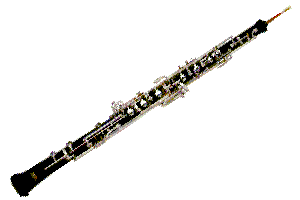

Additionally, there are less bassoonists and oboe players required in ensembles, which further reduces experts who are available to teach. So, you may struggle to find an expert in your local area. Unlike more common instruments such as the clarinet, it is harder to find an expert on the oboe or bassoon.

Expert AvailabilityĪn expert tutor is invaluable for a developing player as they can teach lessons and share knowledge. But, if you have smaller hands, you may struggle with fingering and hand positions. However, since the reed is larger, it is easier to make sounds out of a bassoon. You’ll need a good ear, as you’ll need to constantly tune either instrument. Tuning is done by tightening or loosening the embouchure to adjust airflow. Additionally, tuning is difficult as you can’t simply push in or pull out. This can help guide you through the challenges of learning a double reed instrument.īoth instruments share embouchure challenges, which takes time to solidify. So, it is recommended that you find an instructor. These instruments take lots of resilience and dedicated practice. You may be interested to know which are the easiest and hardest instruments to play and both the bassoon and oboe are one of the hardest. This can help players to choose the right reed. Store bought reeds are often classified as medium, medium soft or medium hard. Reeds for both instruments are sold individually and there are different types available. This is a fine metal tube placed in the instrument. A double reed has two pieces of can vibrating against each other, but it is placed into the oboe and on a bocal for the bassoon. While both the bassoon and oboe use a double reed, there are some differences. This is an expressive instrument that has a piercing upper octave and darker lower octave. The timbre of an octave is often described as singing and colorful that can pierce through the sounds of a complete ensemble. The oboe is always in the key of C with a range spanning almost three octaves.
#Basoon vs fagott full
While the upper octave is tense, the middle octave is light and mellow and the lowest octave has a full tone. This bass clef instrument is in the key of C to create a mellow tone. The bassoon has a large range that spans over three octaves. Additionally, while the oboe reed is placed directly into the instrument, the bassoon reed is placed on a bocal. While the bassoon is almost four and a half feet in length, the oboe is a mere 26 inches. Size & Appearanceīoth the oboe and bassoon have a conical bore, but the long body of the bassoon requires a U turn within its tubing. While there are a number of similarities, there are some key differences between the oboe and bassoon. However, the bassoon continued to evolve throughout the 18th and 19th centuries. Originally, it was a single piece of wood with a double reed attached to it.ĭuring the 17th century, this one-piece instrument evolved into a four-piece instrument that managed the massive amount of tubing. The bassoon dates back from the 16th century, but it was known by a variety of names including the fagot. The bassoon offers a variety of agility and character. Like an oboe, the bassoon is a double reed instrument that has a distinctive tone and wide range.

The modern oboe has a range of two and a half octaves and this instrument is commonly used to tune an orchestra or band. This model employed finger plates rather than open rings. The instrument evolved, particularly in the 1800s but the final instrument that we are used to today was created in 1906.

The oboe is thought to have been developed in Louis XIV’s court in France in 1657. Oboe fingering is similar to a recorder, flute, clarinet or saxophone. Beginner oboes typically have a plastic body, but you’re likely to find a grenadilla wood body for more advanced players. In this article, we will explore both the similarities and differences between these two instruments to help you discover which one is the right choice for you. Whether you’re a student deciding between these instruments or you’re simply curious, you will want to know how about the oboe vs bassoon comparison. Of course, today, these instruments are made from metal, wood, plastic or a combination of these materials.īoth the bassoon and oboe are firmly in this category and have many similarities. The woodwind family takes its name because these instruments used to be made fully out of wood. Have four main sections and two instruments in the woodwind section are the bassoon and oboe. Trusted Source Orchestra - Wikipedia An orchestra is a large instrumental ensemble typical of classical music, which combines instruments from different families.


 0 kommentar(er)
0 kommentar(er)
